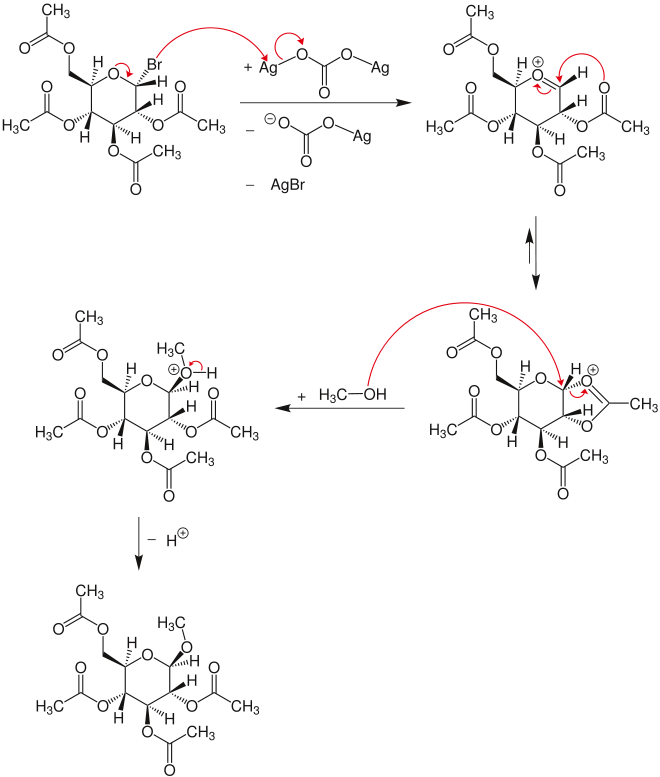Koenigs–Knorr reaction
The Koenigs–Knorr reaction in

In its original form, Koenigs and Knorr treated acetobromoglucose with alcohols in the presence of silver carbonate.[1] Shortly afterwards Fischer and Armstrong reported very similar findings.[2]
In the above example, the stereochemical outcome is determined by the presence of the neighboring group at C2 that lends
Mechanism
In the first step of the mechanism, the glycosyl bromide reacts with silver carbonate upon elimination of silver bromide and the silver carbonate anion to the oxocarbenium ion. From this structure a dioxolanium ring is formed, which is attacked by methanol via an SN
2 mechanism at the carbonyl carbon atom. This attack leads to the inversion. After deprotonation of the intermediate oxonium, the product glycoside is formed.[3]
The reaction can also be applied to carbohydrates with other protecting groups. In the oligosaccharide synthesis in place of the methanol other carbohydrates are used, which have been modified with protective groups in such a way that only one hydroxyl group is accessible.
History
The method was later transferred by Emil Fischer and Burckhardt Helferich to other chloro-substituted purines and produced thus for the first time synthetic nucleosides. It was later improved and modified by numerous chemists.
Alternative reactions
Generally, the Koenigs–Knorr reaction refers to the use of glycosyl chlorides, bromides and more recently iodides as glycosyl donors. The Koenigs–Knorr reaction can be performed with alternative promoters such as various heavy metal salts including
References
- .
- .
- ISBN 978-0-12-429785-2.
- .
- ISBN 9780323153645.

